Last night I saw this young one out in the open. Adults can be quite large, approaching ten inches long, but this one was only about four inches and likely a first year juvenile. But they can live to over 30 years old, so it should have a long life ahead of it.
|
The spotted salamander is a fairly common creature that is rarely seen. They generally live in burrows underground and just don't seem to come out much. But sometimes on a rainy night you can get lucky and find one roaming around. Last night I saw this young one out in the open. Adults can be quite large, approaching ten inches long, but this one was only about four inches and likely a first year juvenile. But they can live to over 30 years old, so it should have a long life ahead of it. For a size comparison, here is a photo of a northern slimy salamander (Plethodon glutinosus) that was on the other side of a downed branch. The slimy was around nine inches long. Lots of salamanders and frogs were out last night.
2 Comments
Taking a walk around the lake at Stone Valley Recreation Area we saw this osprey doing a bit of fishing. Like all the fishermen we saw, it wasn't catching anything. Here is a photo after one of the missed attempts.
Today a white-throated sparrow flew into our work building. It has been snowing quite a bit lately, with something around two feet on the ground, so likely it was just looking for a comfy place to rest. But it was going to be mayhem, as we have a couple of dogs that spend the day in the office, and they would like nothing more than to chase a bird around all afternoon.
So, it was captured and released back into the snowy world from whence it came, but it got it's picture taken along the way. When most people think of a porcupine, they think of this one, the North American Porcupine (Erethizon dorsatum). But just in the New World alone there are nearly 20 species of porcupines, so this is just one of many.
And for a fun fact, these porcupines have bright orange color on the front of their big incisors so that's what is seen near the mouth. Not sure if it was yawning or what, but one large, orange tooth is sticking out there. The Appalachian Mountains in the eastern US have what is known as the "Ridge and Valley" region. It's extensive, but shows up across much of central and east-central Pennsylvania. It is, just as the name implies, ridges, separated by valleys.
I recently hiked to the top of one ridge, and took this somewhat typical image of what the ridge and valley in Pennsylvania looks like. Scattered farms and woodlots on the more or less flat valleys, and forested ridges. Projects since Michigan have been all day and night with no opportunities for photos. But saw this young coyote today and put down all the gear I was carrying to get the camera out. It was poking around the wetland in the foreground, but heard me when I set down a big bag of aluminum poles and started up the road. Disappeared in the weeds right after I took this pic.
My project is complete in Michigan and moving on to the next thing. This just seemed like a nice image to wrap things up.
I was recently hiking at the Huron County Nature Center and Wilderness Arboretum in Port Austin, Michigan. Nice place, but bring the bug spray. At the far end of the trail system there is a short boardwalk over some swampy ground, and saw this female red-winged blackbird with a mouthful of bugs. So I stopped to look around a bit more. Quite soon this male red-winged blackbird showed up and started chattering and displaying his wing feathers. So probably by now you've guessed the final photo. There was a single fledgling in the underbrush. The male was trying to scare me away, while the female was bringing in a beakload of food. I headed off to let them get back to things.
Well, what's to say. It is a vulture, and honestly looks a fair lot like a turkey. It's a turkey vulture.
The northern leopard frog has some color variations from nearly brown through vivid lime green. I'd say this one is pretty far into the lime green zone.
|
AuthorKeith Christenson - Wildlife Biologist Categories
All
Author
Keith Christenson Wildlife Biologist Archives
September 2021
|
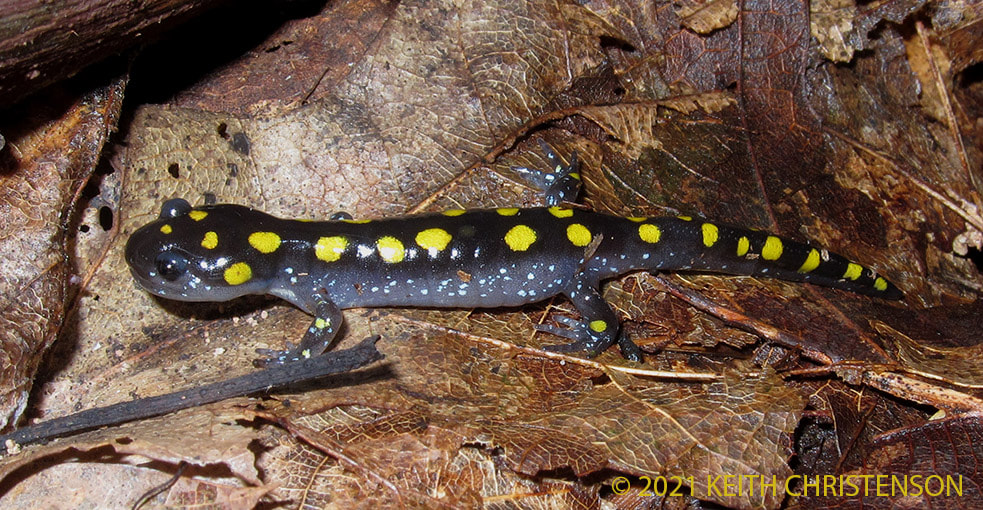


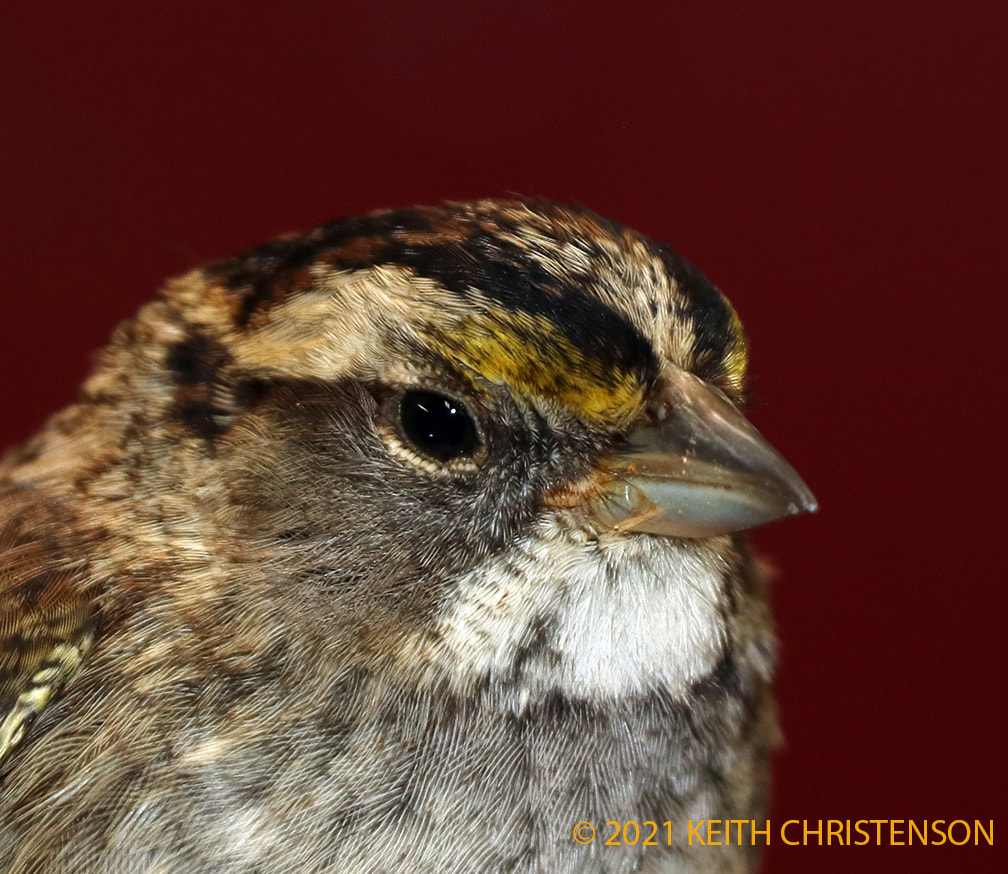

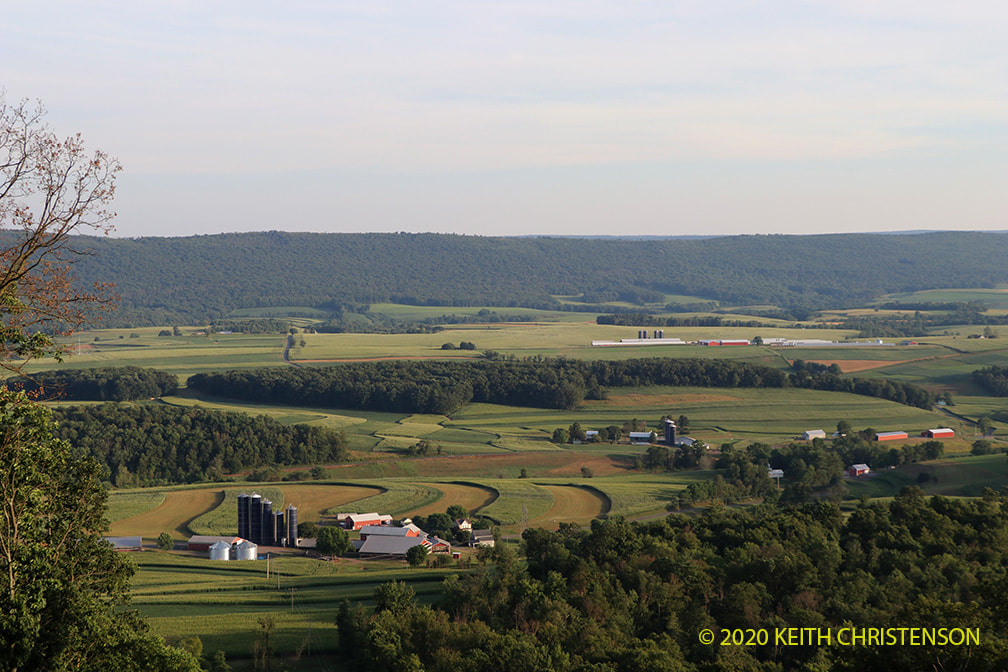

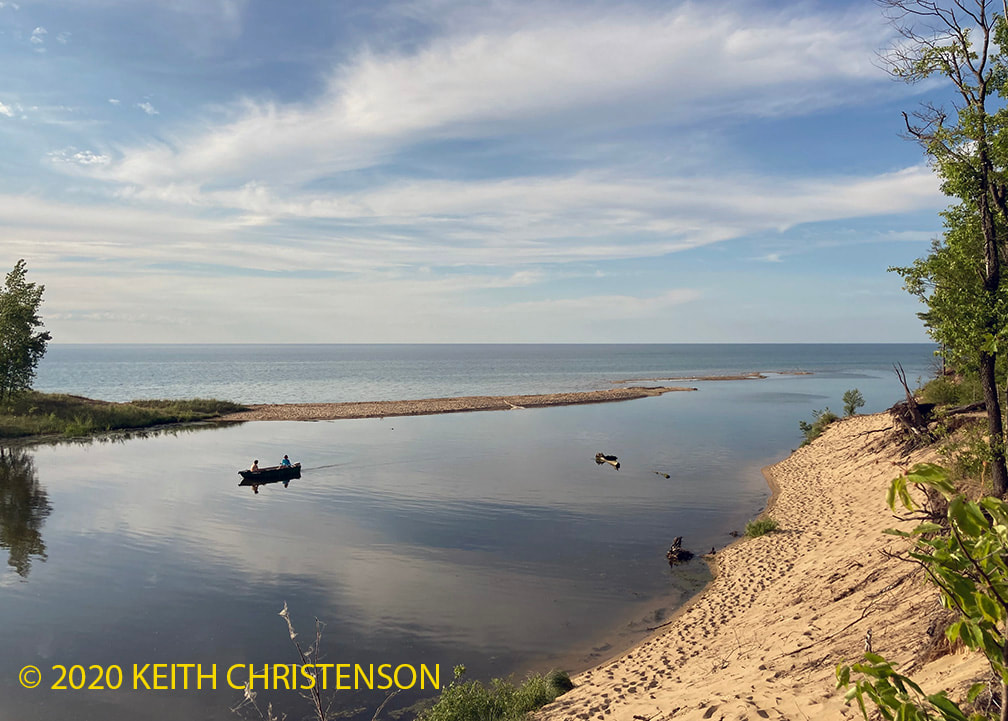
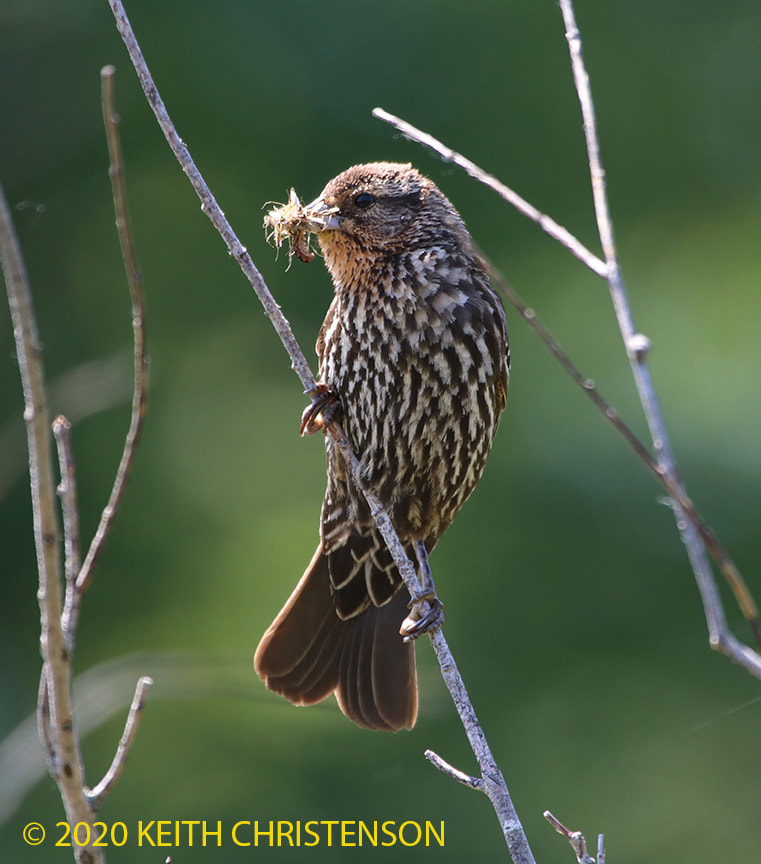
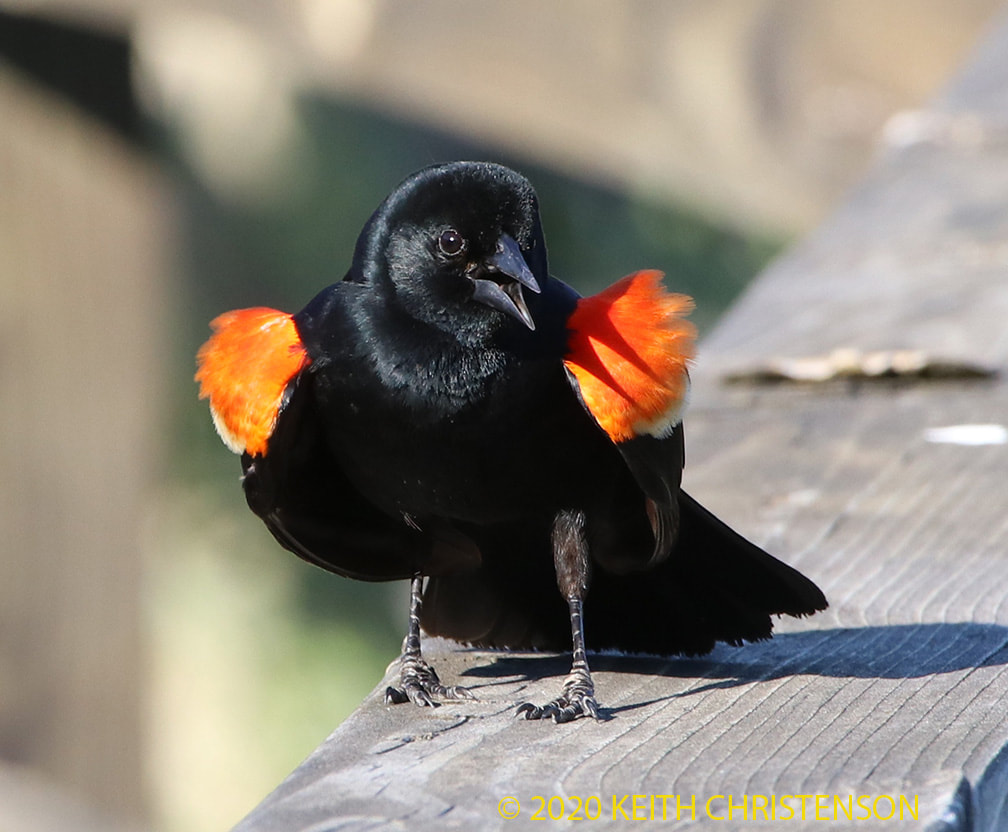
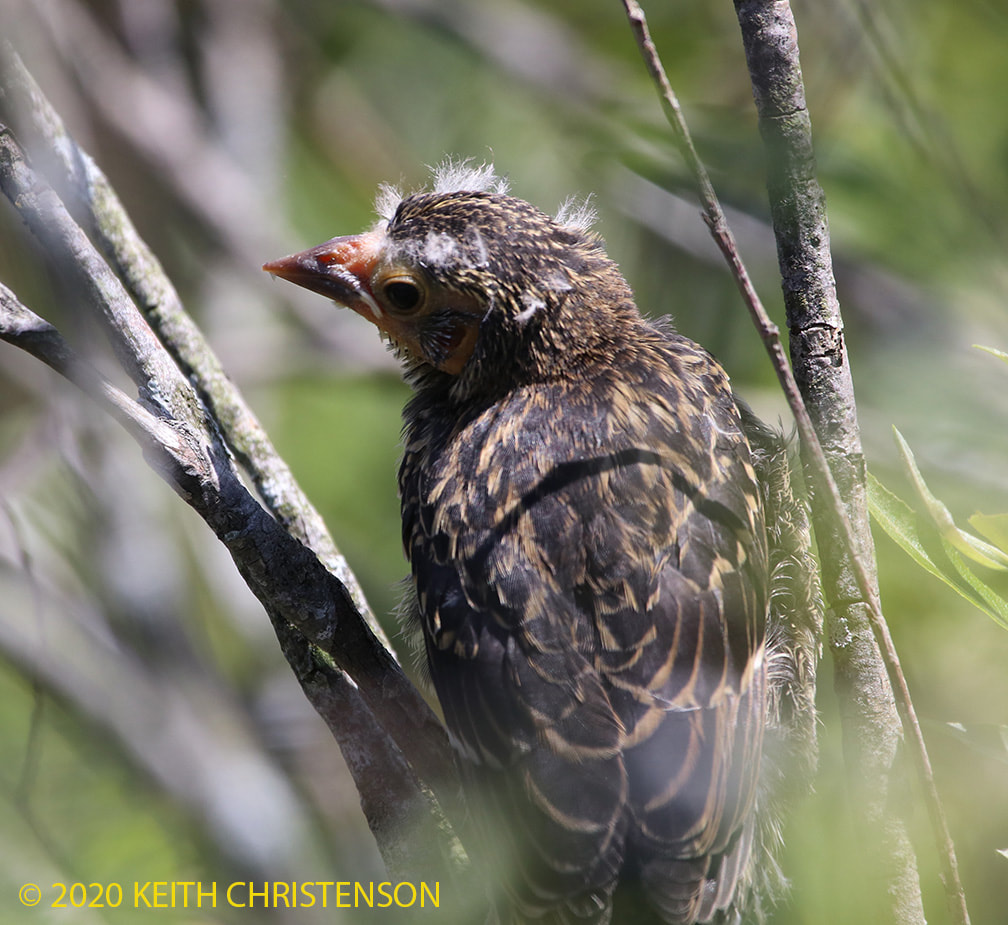
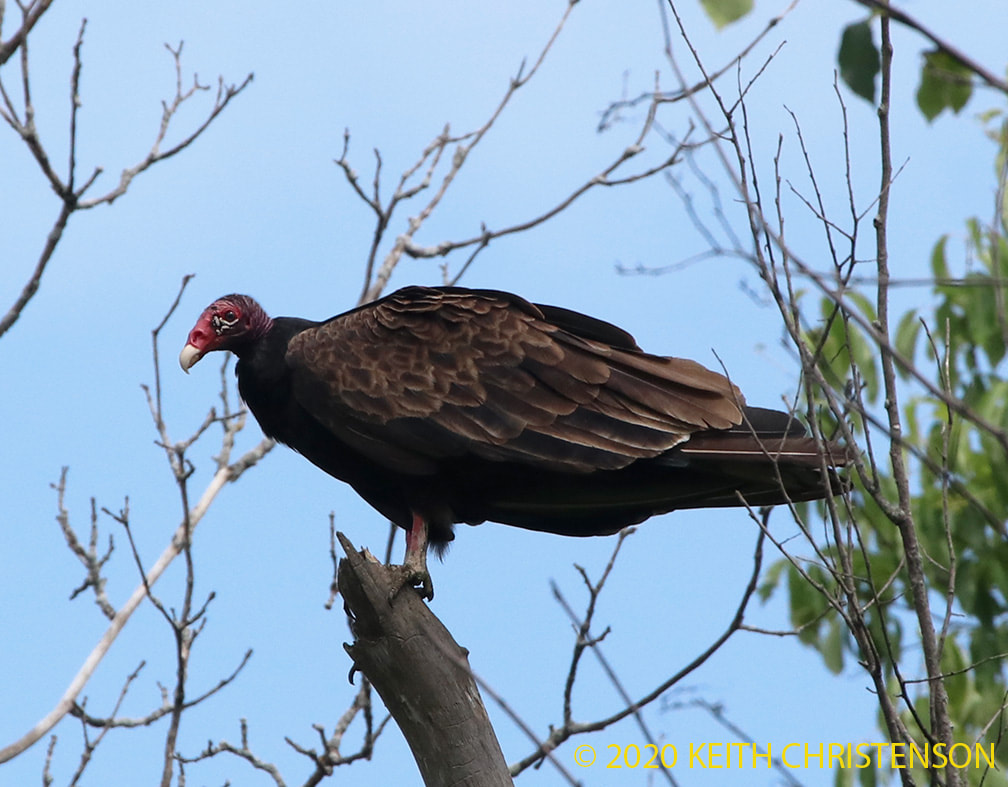

 RSS Feed
RSS Feed